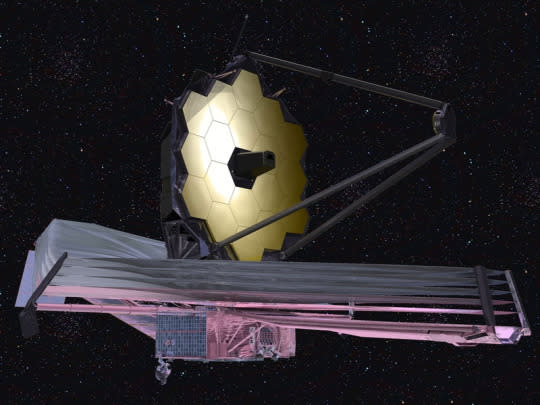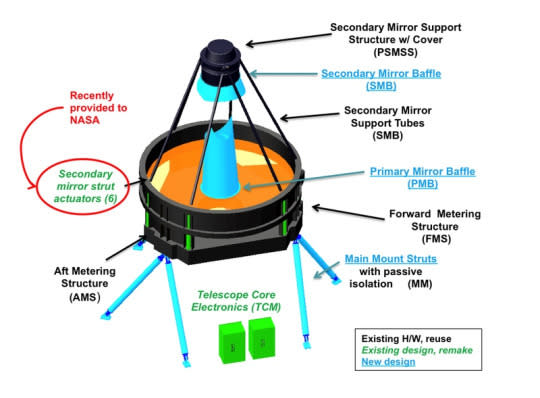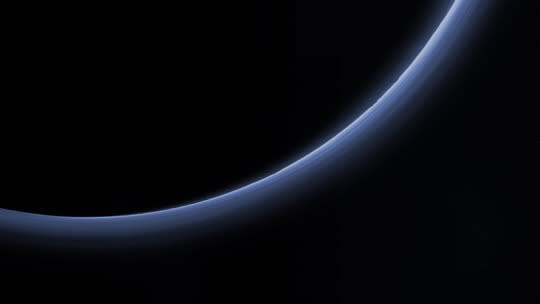This Week in Space: Crowdsourcing Jupiter, Blue Pluto, and Future Telescopes

The James Webb Space Telescope (Image: NASA)
A lot of what we know about our solar system comes from probes we send out into it, to snap a bunch of pictures and beam back to Earth. But our knowledge of the broader universe comes from closer to home: telescopes that are on the Earth or orbiting just above it.
When the Hubble Space Telescope launched in 1990, it promised us unprecedented views of the universe, without any of the visual interference introduced by Earth’s atmosphere. And while earthbound telescopes are increasingly able to offset those atmospheric effects to deliver spectacular results of their own, there’s no denying the power of sending a sensitive telescope into space.
While Hubble is still working, it is 26 years old. NASA is gearing up to launch its next big space telescope: After years of construction and delays and more than $3 billion in costs, the James Webb Space Telescope is now mostly complete and will launch in 2018. And next month the space agency will turn its attention to the space telescope after that.

Design of the WFIRST (Image: NASA)
That next-next-generation space telescope is called WFIRST — short for Wide-Field Infrared Survey Telescope — and will use the telescope from a cancelled spy satellite to search for dark matter, exoplanets, and hints about the early universe.
When it launches in the mid-2020s, WFIRST won’t orbit the Earth like the Hubble. Instead, like the Webb telescope, it will sit at a stable point about a million miles away from the Earth, cooled by a shield to protect its sensitive infrared measurements from the heat and light of both the sun and the Earth.
Crowdsourcing Jupiter
The Juno mission is cruising toward the solar system’s biggest planet; right now, it’s about six months from Jupiter. One of its goals is to take lots and lots of pictures of the planet. But there’s a catch: Because of the way Juno’s camera is designed and the highly dynamic nature of the planet’s cloud cover, processing images from Jupiter is going to be really tricky. So NASA is asking for the public’s help.
The mission’s science team is asking amateur astronomers who’ve captured good pictures of Jupiter from Earth to upload those images to the Juno mission website. The team will then use those uploaded images as reference points to help orient Juno’s camera.

Juno’s huge solar panels (Image: NASA)
Juno’s cruise to Jupiter also set a record this week. On January 13, it became the most distant solar-powered spacecraft ever. Generally, missions into the outer solar system are nuclear powered, because the farther you get from the sun, the less light there is to be scooped up by solar panels; at this point, Juno is receiving about four percent of the light energy we’d receive here on Earth.
Juno has three 30-foot-long solar arrays to help it collect as much energy as it can. It helps that solar cells are now way better than they used to be, but its onboard computer technology is also more power efficient. One side benefit: You can send a probe to Jupiter without worrying about radioactive fallout in the case of a launch accident.
Pluto’s blue sky
This was the plan all along: When the New Horizons mission blew past Pluto last year, the science team knew that it would be downloading the data from that flyby over the course of a year. That’s enough to try anyone’s patience. But on the positive side, it means that New Horizons keeps making news long after it’s put Pluto in its rearview mirror.

Pluto’s blue atmosphere (Image: NASA)
This week, that continuing trickle of data brought us a breathtaking high-resolution image of Pluto — backlit by the sun and showing off glowing light scattered by its thin atmosphere. Pluto’s atmosphere is blue, like Earth’s, but is made of harsher stuff — it’s a smog of hydrocarbons. In the image you can see the ridges of Pluto’s ice mountains sticking up above the curve of the planet, and distinct layers of haze in the atmosphere.
Then there’s the fancy high-resolution color image, released this week, of Wright Mons, likely an ice volcano and the largest such feature in the outer solar system. Perhaps the most impressive discovery made by New Horizons is the fact that parts of Pluto’s surface are remarkably unmarked by craters, suggesting that Pluto has a young and geologically active surface. Volcanoes are really, really good at re-paving smooth planetary surfaces — so perhaps Wright Mons is a part of the process that keeps Pluto looking so youthful.
